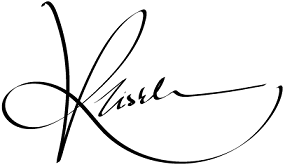Color is a fundamental aspect of art that influences how we perceive and interpret visual compositions. From the vibrant hues of a sunrise to the muted tones of a winter landscape, colors evoke emotions, convey messages, and enhance storytelling in art. As a visual artist, understanding color theory is essential for creating captivating and meaningful artwork.
Art History Timeline: To truly appreciate the role of color in art, it’s important to explore the evolution of art throughout history. From the ancient cave paintings of Lascaux to the contemporary masterpieces of today, artists have used color to express their ideas, beliefs, and emotions. The use of pigments derived from natural sources such as plants, minerals, and animal substances marked the early stages of color exploration in art.
Evolution of Art: Over time, advancements in artistic techniques and materials have expanded the possibilities for color expression in art. From the Renaissance period’s emphasis on naturalism and perspective to the Impressionist movement’s exploration of light and color, artists have continuously pushed the boundaries of color theory to create innovative and visually stunning works of art.
Artistic Techniques: Understanding color theory involves familiarity with various artistic practices for manipulating color. Techniques such as color mixing, shading, highlighting, and contrasting allow artists to create depth, dimension, and visual interest in their artwork. Whether working with paint, digital media, or mixed media, mastering these techniques is essential for effective color use in art.
Art Styles: Different art approaches have their own unique approaches to color usage. From the bold, vibrant colors of Fauvism to the subdued, earthy tones of Realism, each style conveys distinct moods, themes, and messages through color. By studying and experimenting with different art styles, artists can broaden their understanding of color theory and develop their own artistic voice.
Artistic Endeavors: As artists, our creative journey is an ongoing exploration of color and its potential for expression. Whether we’re working on a traditional canvas painting or experimenting with digital art, color remains a central element of our artistic endeavors. By continuously honing our understanding of color theory and experimenting with new techniques, we can elevate our artwork to new heights of creativity and impact.
Artistic Period: Each artistic period in history has its own unique color palette and aesthetic sensibilities. From the vibrant colors of the Baroque era to the monochromatic minimalism of the Modernist movement, studying the color choices of past artists can provide valuable insights and inspiration for contemporary artistic practice. By embracing the rich tapestry of artistic history, we can enrich our own artistic practice and contribute to the ongoing legacy of color in art.
Cave Painting: The origins of color in art can be traced back to the prehistoric cave paintings created by early humans. These ancient artworks, found in caves around the world, depict scenes of hunting, wildlife, and everyday life using natural pigments such as ochre, charcoal, and clay. Despite their simplicity, these cave paintings reveal a deep understanding of color and its power to convey meaning and symbolism in art.
Contemporary Art: In today’s contemporary art world, color continues to play a central role in artistic expression. From bold, abstract paintings to immersive multimedia installations, contemporary artists use color in innovative and unconventional ways to challenge viewers’ perceptions and provoke thought and emotion. By embracing the ever-evolving landscape of contemporary art, we can push the boundaries of color theory and create art that resonates with audiences on a profound level.
In conclusion, understanding color theory is essential for any visual artist striving to create impactful and meaningful artwork. By exploring the art history timeline, studying creative techniques, and embracing the diverse styles and periods of art, we can deepen our understanding of color and its significance in artistic expression. As we continue on our artistic journey, let us celebrate the power and beauty of color in art and harness its potential to create art that inspires, engages, and enriches the lives of others.
Shop my artwork collection.
Check my digital artwork collection.


